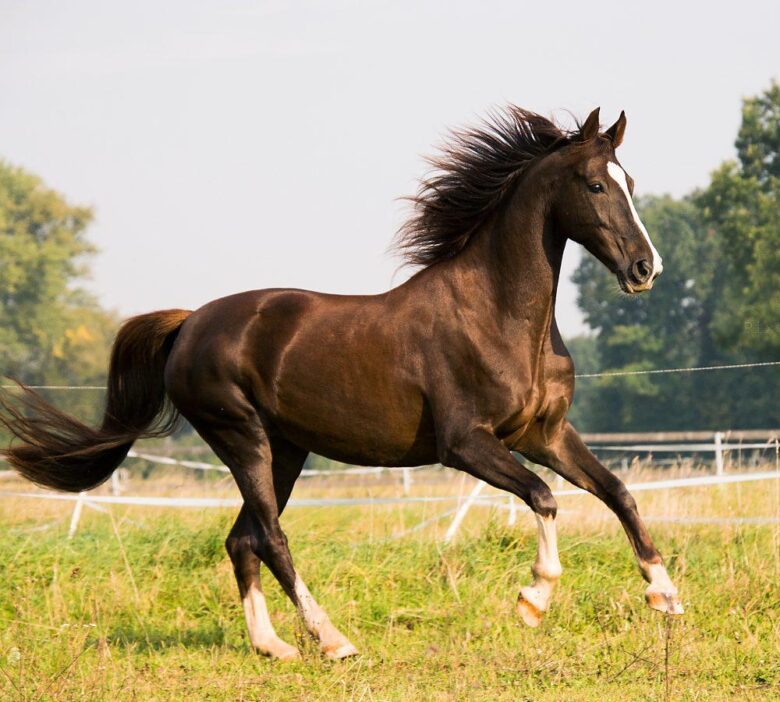Embark on a journey into the intricate world of Equine Excellence as we unravel the mysteries surrounding horse anatomy and physiology. Delve deep into the inner workings of these majestic creatures and uncover the fascinating secrets that make them the extraordinary beings they are. Join us as we explore the wonders of the equine body and gain a newfound appreciation for the beauty and complexity of these magnificent creatures.
Exploring the Intricacies of Horse Anatomy
Horse anatomy is a fascinating subject that delves deep into the inner workings of these majestic creatures. The skeletal structure of a horse is a complex system of bones that provide support and mobility for the animal. Understanding the anatomy of the horse can help horse owners and veterinarians better care for these animals and diagnose any potential health issues.
The musculature of a horse is a masterpiece of strength and power. The muscles of a horse are well-developed and are essential for movement and performance. Different muscles in the horse’s body allow for various movements such as galloping, jumping, and turning. Studying horse anatomy can give insight into the biomechanics of these movements and how to improve a horse’s performance through proper conditioning and training.
One important aspect of horse anatomy is the digestive system, which plays a crucial role in the horse’s overall health and well-being. Horses are herbivores with a unique digestive system that relies on a fermentation process in the hindgut to break down fibrous plant material. Understanding how the horse’s digestive system works can help horse owners make informed decisions about their horse’s diet and prevent digestive issues such as colic.
The Importance of Understanding Horse Physiology
Understanding horse anatomy and physiology is crucial for any equestrian enthusiast or horse owner. By having a deep knowledge of how a horse’s body functions, one can better care for their equine companion, prevent injuries, and optimize their performance.
One key aspect of horse physiology to grasp is the anatomy of their legs and hooves. Horses are large, powerful animals that put a tremendous amount of stress on their limbs, particularly during activities such as jumping or running. Knowing the structure of a horse’s legs and hooves can help prevent injuries and identify issues such as lameness early on.
Additionally, having a thorough understanding of a horse’s respiratory system is essential for ensuring their overall health and well-being. Horses have a unique respiratory system that is highly efficient but also susceptible to issues such as respiratory infections or allergies. By understanding how a horse’s lungs function, one can better manage their respiratory health and performance.
Unveiling the Secrets of Equine Musculoskeletal System
Understanding the anatomy and physiology of horses is crucial to caring for these magnificent animals. The musculoskeletal system of horses plays a vital role in their overall health and performance. By delving into the intricacies of the equine musculoskeletal system, we can unveil the secrets that make horses such incredible athletes.
One of the key components of the equine musculoskeletal system is the skeletal structure of horses. From their powerful legs to their flexible spine, every bone in a horse’s body is designed to support their massive frame and enable them to move with grace and agility. Understanding the structure of the horse’s skeleton can help us better appreciate the incredible strength and athleticism of these animals.
Another important aspect of the equine musculoskeletal system is the network of muscles that work together to power the horse’s movement. From the powerful quadriceps in their hind legs to the intricate muscles in their neck and back, every muscle in a horse’s body plays a crucial role in their ability to run, jump, and perform various tasks. By understanding how these muscles work together, we can optimize our training and care practices to keep our equine partners healthy and happy.
Harnessing the Power of Knowledge for Equine Health and Performance
The intricate anatomy and physiology of horses play a crucial role in their health and performance. Equine enthusiasts understand the importance of harnessing this knowledge to ensure the well-being and success of these magnificent animals. By delving deep into the inner workings of a horse’s body, we can unlock the secrets to maximizing their potential and keeping them in peak condition.
One key aspect of equine excellence is understanding the musculoskeletal system of horses. From their powerful legs to their graceful necks, each part of a horse’s body is specially designed to support their movements and activities. By learning about the muscles, bones, and joints that make up a horse’s anatomy, we can tailor our care and training practices to promote strength, flexibility, and agility.
Furthermore, a deeper understanding of a horse’s digestive system is vital for their overall health and well-being. From their unique dental structure to their sensitive stomachs, horses have specific dietary requirements that must be met for optimal performance. By knowing how their digestive system functions, we can provide them with the proper nutrition and care to keep them healthy and thriving.
Tips for Mastering Horse Anatomy and Physiology
When it comes to mastering horse anatomy and physiology, it is crucial to have a deep understanding of the intricate details of these magnificent creatures. One of the key areas to focus on is the skeletal structure of a horse. Understanding the bones and joints will help you better comprehend how a horse moves and functions. Take the time to study diagrams and models to familiarize yourself with the various bones and their functions.
Another essential aspect of horse anatomy is the muscular system. Horses have powerful muscles that enable them to gallop, jump, and perform a variety of movements. Learn about the different muscles in a horse’s body and how they work together to create locomotion. Pay special attention to the major muscle groups such as the gluteals, hamstrings, and quadriceps.
Furthermore, delving into the circulatory and respiratory systems of horses will give you a holistic view of their overall health. Understanding how blood circulates through a horse’s body and how they breathe will provide valuable insight into their physical well-being. Use online resources, study guides, and even anatomy books to deepen your knowledge in these areas.
In Summary
In conclusion, delving into the intricate world of horse anatomy and physiology through EquineExcellence has provided us with a deeper understanding and appreciation for these magnificent creatures. By gaining insights into the inner workings of our equine companions, we are able to enhance their well-being and strengthen our bond with them. So next time you gaze into the soulful eyes of a horse, remember the marvels that lie beneath the surface, waiting to be explored and understood. Embrace the journey of EquineExcellence and revel in the beauty of the horse, inside and out.



